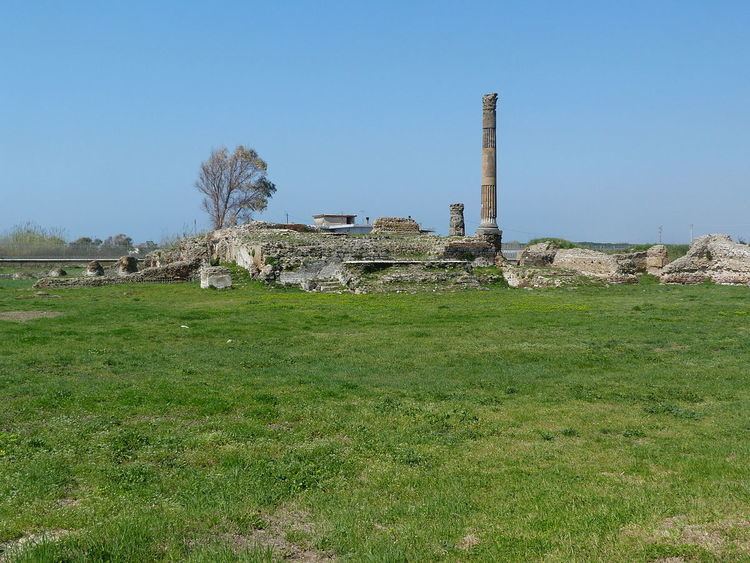Type Settlement | Public access Yes | |
 | ||
Management Soprintendenza per i Beni Archeologici di Napoli Website Sito Archeologico di Liternum (Italian) Hours Open today · Open 24 hoursFridayOpen 24 hoursSaturdayOpen 24 hoursSundayOpen 24 hoursMondayOpen 24 hoursTuesdayOpen 24 hoursWednesdayOpen 24 hoursThursdayOpen 24 hoursSuggest an edit Similar Cumae, Museo archeologico dei Camp, Flavian Amphitheater, Macellum of Pozzuoli, Roman Theatre - Benevento | ||
Ricostruzione foro di liternum
Liternum was an ancient town of Campania, southern central Italy, on the low sandy coast between Cumae and the mouth of the Volturnus. It was probably once dependent on Cumae. In 194 BC it became a Roman colony. Although Livy records that the town was unsuccessful, excavation reveals a Roman town existed there until the 4th century AD.
Contents
Parco archeologico di liternum
History
The town is mainly famous as the residence of the elder Scipio Africanus, who withdrew from Rome and died there. His tomb and villa are described by Seneca the Younger. In Ovid's Metamorphoses Liternum is mentioned for its mastic trees: lentisciferum... Liternum. Augustus Caesar is said to have conducted a colony of veterans to Liternum.
However, the place never had any great importance, and the lagoons behind it made it unhealthy. The construction of the Via Domitiana through Liternum made it a posting station, but the town later had a malaria outbreak and went into decline.
Its medieval and modern successor Littere, now a comune (municipality) in the Metropolitan City of Naples, became a bishopric as Roman Catholic Diocese of Lettere(–Gragnano) in 987, but has been suppressed in 1818 and remains a Latin Catholic titular see.
